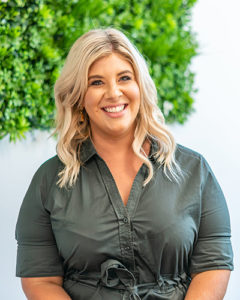Right strategies, right results – which content & social media tactics will work for your practice?
Struggling to navigate the maze of marketing tactics? Wondering what will work best for your practice?
Here’s an article to help you decide.
Social media and content marketing
Lets compare the levels of investment, risk and reward associated with the major social media and content marketing strategies.
Read on if you’re keen to make social media and content marketing choices that
- won’t bust your budget or devour precious hours
- will resonate with your patients and boost your business.
1. Content marketing
Content really is king. The more relevant content you publish, the more trust you will build with your patients, helping to build relationships and position yourself as the expert.
Consistently writing and publishing content on your website and social media channels also helps increase your ranking with search engines like Google.
Content marketing is a cornerstone of a savvy digital marketing strategy and a healthy website essential. Content marketing that answers questions with clarity and integrity can turn leads into loyal patients.
1.1 Rules of engagement
Comply with AHPRA’s marketing rules
You can land in hot water with AHPRA if you overstep their advertising guidelines.
That means, among other things, your content must avoid:
- creating an unrealistic expectation of beneficial treatment
- misleading patients
- using any testimonials
- encouraging people to overuse health services.
Know who you’re targetting
Create loads of lovely content that’s sure to resonate with your patient groups. You know what their concerns are, stick to them.
According to HealthDirect, 84% of Australians looked online to find health information last year. Content marketing helps them find your answers to their questions.
Keep it fresh
Once you’ve established your practice as a credible online source of answers and insight, maintain the momentum. You’ve created an ongoing expectation, fulfil it.
Write well
Writing for a patient audience is not the same as writing to your medical colleagues. You need to
- assume a reading age of about 12
- use short, straightforward sentences
- use plain English terms
- make it interesting.
If writing clear, convincing words to engage busy, sceptical humans is not your best thing, get help.
Likewise, if graphic design or video making are not your strong suits, think about using a professional.
Grammarly and the Hemingway Editor App are excellent writing aids if you want to improve your own writing skills because professional copywriting is beyond your budget.
Segment
Your analytics will show you ‘who’s interested in what.’ Use this data to segment your content. Give your audience the information and answers they’re seeking and spare them the information they don’t want.
You can also segment your audience by asking for an email as a condition of accessing some or all of your content. This is called ‘gating’.
1.2 Return on Investment (ROI)
Here’s how the 7 most common content marketing strategies stack up.
Medium investment, high return
- Blogging – post high quality 800-1000 word articles on your website at least once a month
- Webinars – host structured, engaging sessions that keep your target audiences up to date on topics that matter
High investment, high return
- Infographics – post clever, attractive visuals that explain issues clearl
- eBooks and white papers – publish well researched, high value content discussing health sector issues for patients and or your colleagues
- Videos – post short well-made videos showcasing your expertise and humanity and directly addressing patient concerns
- Online courses – create a series of training sessions for community members or specific patient groups
Low investment, high return
- Email marketing – sending your contact list a regular newsletter or frequent emails
1.3 What’s the risk?
The biggest risk in content marketing is investing time and money creating content that misses the mark with your audience. You can reduce that risk by choosing the right topics and writing in a friendly tone using plain English not medical jargon.
2. Social media marketing – pick the right platforms
Now you’ve got some great content to share through your social media accounts.
Regular social media posting and focused campaigns are excellent marketing options for connecting to and engaging your target audience.
In Australia, 18 million of us (78%) use social media. We spend a third of our online time browsing our socials for nearly 2 hours per day. You can be sure a high proportion of your patients are active social media creatures.
2.1 Rules of engagement
Comply with AHPRA’s marketing rules
AHPRA holds you responsible for what’s posted to your personal and professional social channels and does not permit testimonials.
So, turn off all reviews to save yourself the hassle of monitoring them one by one. And think carefully about what you post, even in your personal capacity.
Don’t try to be everywhere
While 78% of Australians use the Internet to answer their health care questions, your current and potential patients will have their preferred social sites.
Here’s our ultimate guide to social media channels. Once you’ve chosen a platform, pay attention to stats such as likes, shares and comments to monitor your success.
Be a skillful user
Learn the protocols and practices – you need to be a skilful user of specific platforms.
Facebook, LinkedIn or Instagram may have overlapping audiences, but they’re likely to be looking for different answers and insights from each platform.
Test the waters
Test your assumptions before you take the plunge. Plan a series of posts, run a one off campaign monitor and evaluate the results. If you find planning, implementing or analysing social media marketing less than fascinating, we can help.
2.2 Return on investment
Like most worthwhile investments, effort and money invested in marketing can take time to yield results. That said, here’s an overview of the relative ROI on 7 key social media strategies.
Medium investment, medium return
- Regular social media posting (organic posts)
Linking to website content – blogs, news etc, promoting particular services, supporting community events, building your team profiles - Responding to posts from people who follow you
- Running live sessions to provide real time information and answers
Medium investment, high return
- Paying to promote your posts (sponsored posts)
the host platform will show your posts to a wider audience - Highlighting sponsored posts
representing these posts to [people who already know about your brand
High investment, high return
- Inviting influential social media performers to share your content
- Setting up and running groups that support your target patient profiles
2.3 What’s the risk?
Social media marketing is a low-risk strategy provided you set and monitor a clear set of standards for posting and don’t permit reviews.
What now?
Now you’ve read the article, what’s next?
If you’re content with your current social media and content marketing choices, that’s great!
If you’re keen to boost your existing strategies or do things differently, we’d love to help.
If you’re feeling overwhelmed and underequipped, with no idea where to begin, we can get you up and running.
Wondering if we make a difference? Check the evidence.
We work with dozens of medical and allied health practices nationwide. These snapshots show how we’ve helped them attract new patients, promote specific services, and build their brands.
Facebook Advertising for a gynaecologist and a chiropractor.
Video marketing and blogging for physiotherapists.
Complete marketing management for a speech therapist.
What makes us different?
We’ll let our lovely clients answer that.
Have a question about anything you read here?
Ready to test our specialist medical marketing expertise? Book a free strategy session with Splice today.




